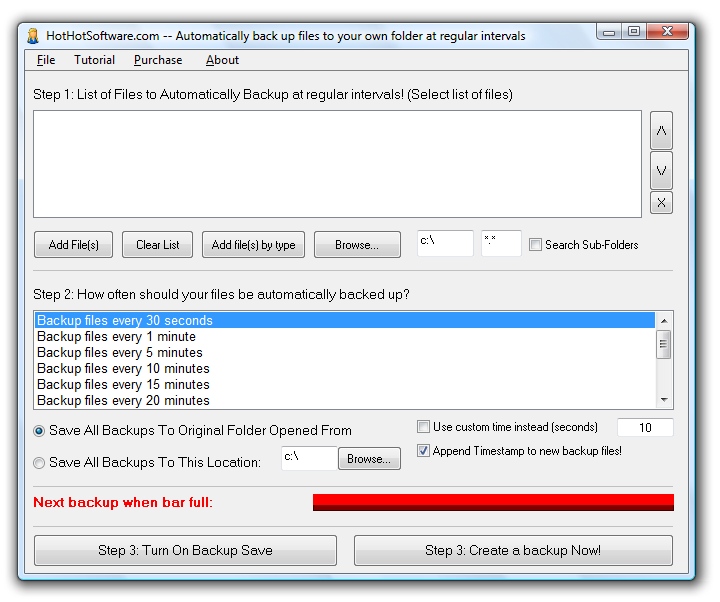
- #Automatic folder backup software how to
- #Automatic folder backup software full
- #Automatic folder backup software windows 10
Use the “Keep my backups” drop-down menus to configure how long to keep the backups. You can select as often as every 10 minutes to every 12 hours or daily. Use the “Back up my files” drop-down menu to configure how often to back up your files. (Optional) Click the “Back up now” button to create an on-demand backup. Turn on the “Automatically back up my files” toggle switch. Select the external or removable drive to use as the backup destination. Under the “Back up using File History” section, click the Add a drive button.
#Automatic folder backup software windows 10
To create a file backup from Windows 10 File History, use these steps: Create file backup on Windows 10 from OneDriveĬreate file backup on Windows 10 from File History.Create file backup on Windows 10 from Windows Backup.Create file backup on Windows 10 from File History.In this guide, you will learn the different ways to back up your files using one of the various features available on Windows 10. The only caveat is that you will need a subscription to unlock the 1TB of storage. Since the data is stored in the cloud, they are also protected against natural disasters, and you can access the files across devices. This is because files are backed up automatically as soon as you sign in and start saving files to the OneDrive folder. OneDrive is perhaps the best option for most users to create a file backup on Windows 10.
#Automatic folder backup software full
Windows Backup is better suited for long-term archival or creating full backups. Since the backups are stored on-site, your files will be protected against accidental deletion, hardware failure, and system corruption, but not from natural disasters. However, you can only schedule backups once a day.

It works similarly to File History, but Windows Backup offers an option to back up and restore the installation files. The feature can back up your files to a removable drive or network-shared folder on a NAS server. Windows Backup is the third automatic file backup option on Windows 10. Also, the external storage must always be connected to your computer. Since backups are stored locally, the downside is that the data won’t be protected from natural disasters (fire or flood). This option is better suited for users with a large amount of data, such as video, music, software collections, and project files. Unlike OneDrive, you can store as many backups as the storage space allows, which could be many terabytes.
#Automatic folder backup software how to
In this guide, you will learn the difference between each option and how to use them.įile History is a built-in feature that allows you to create incremental backups of files to an external or network drive at different intervals during the day to prevent data loss.

On Windows 10, you have at least three ways to automatically create a backup and restore your files and documents, including OneDrive, File History, and Windows Backup, to protect the data against accidental deletion, hardware failure, or system failure corruption.


 0 kommentar(er)
0 kommentar(er)
